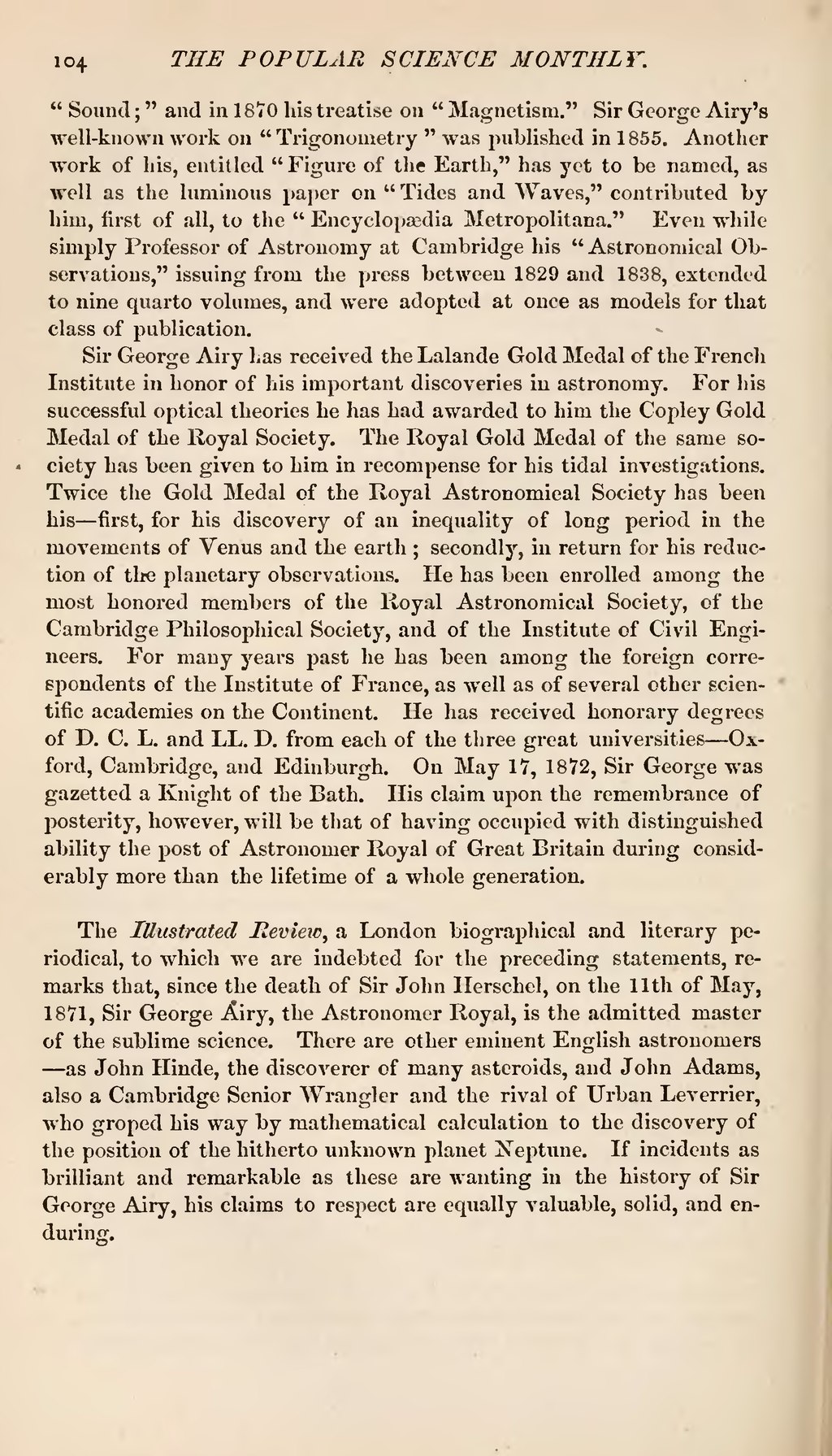"Sound;" and in 1870 his treatise on "Magnetism." Sir George Airy's well-known work on "Trigonometry" was published in 1855. Another work of his, entitled "Figure of the Earth," has yet to be named, as well as the luminous paper on "Tides and Waves," contributed by him, first of all, to the "Encyclopædia Metropolitana." Even while simply Professor of Astronomy at Cambridge his "Astronomical Observations," issuing from the press between 1829 and 1838, extended to nine quarto volumes, and were adopted at once as models for that class of publication.
Sir George Airy has received the Lalande Gold Medal of the French Institute in honor of his important discoveries in astronomy. For his successful optical theories he has had awarded to him the Copley Gold Medal of the Royal Society. The Royal Gold Medal of the same society has been given to him in recompense for his tidal investigations. Twice the Gold Medal of the Royal Astronomical Society has been his—first, for his discovery of an inequality of long period in the movements of Venus and the earth; secondly, in return for his reduction of the planetary observations. He has been enrolled among the most honored members of the Royal Astronomical Society, of the Cambridge Philosophical Society, and of the Institute of Civil Engineers. For many years past he has been among the foreign correspondents of the Institute of France, as well as of several other scientific academies on the Continent. He has received honorary degrees of D. C. L. and LL. D. from each of the three great universities—Oxford, Cambridge, and Edinburgh. On May 17, 1872, Sir George was gazetted a Knight of the Bath. His claim upon the remembrance of posterity, however, will be that of having occupied with distinguished ability the post of Astronomer Royal of Great Britain during considerably more than the lifetime of a whole generation.
The Illustrated Review, a London biographical and literary periodical, to which we are indebted for the preceding statements, remarks that, since the death of Sir John Herschel, on the 11th of May, 1871, Sir George Airy, the Astronomer Royal, is the admitted master of the sublime science. There are other eminent English astronomers—as John Hinde, the discoverer of many asteroids, and John Adams, also a Cambridge Senior Wrangler and the rival of Urban Leverrier, who groped his way by mathematical calculation to the discovery of the position of the hitherto unknown planet Neptune. If incidents as brilliant and remarkable as these are wanting in the history of Sir George Airy, his claims to respect are equally valuable, solid, and enduring.
